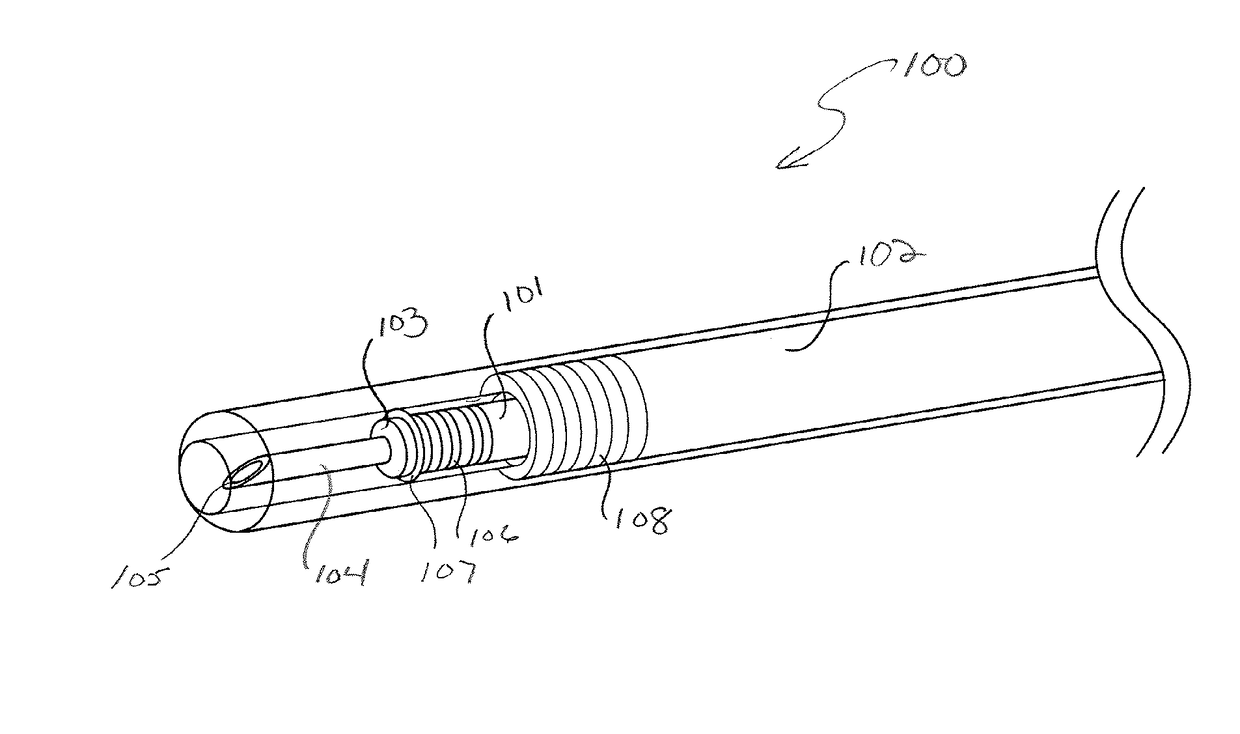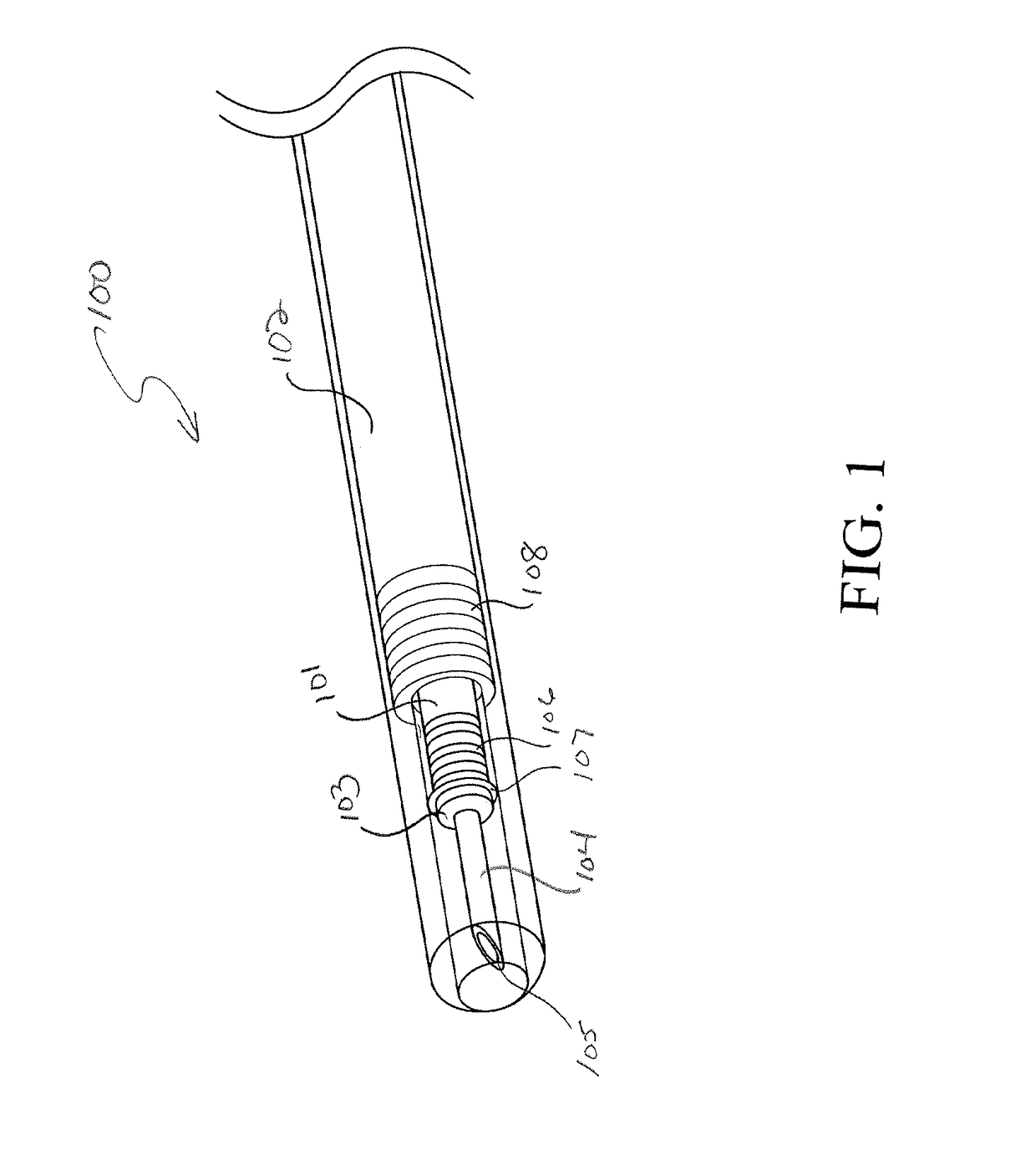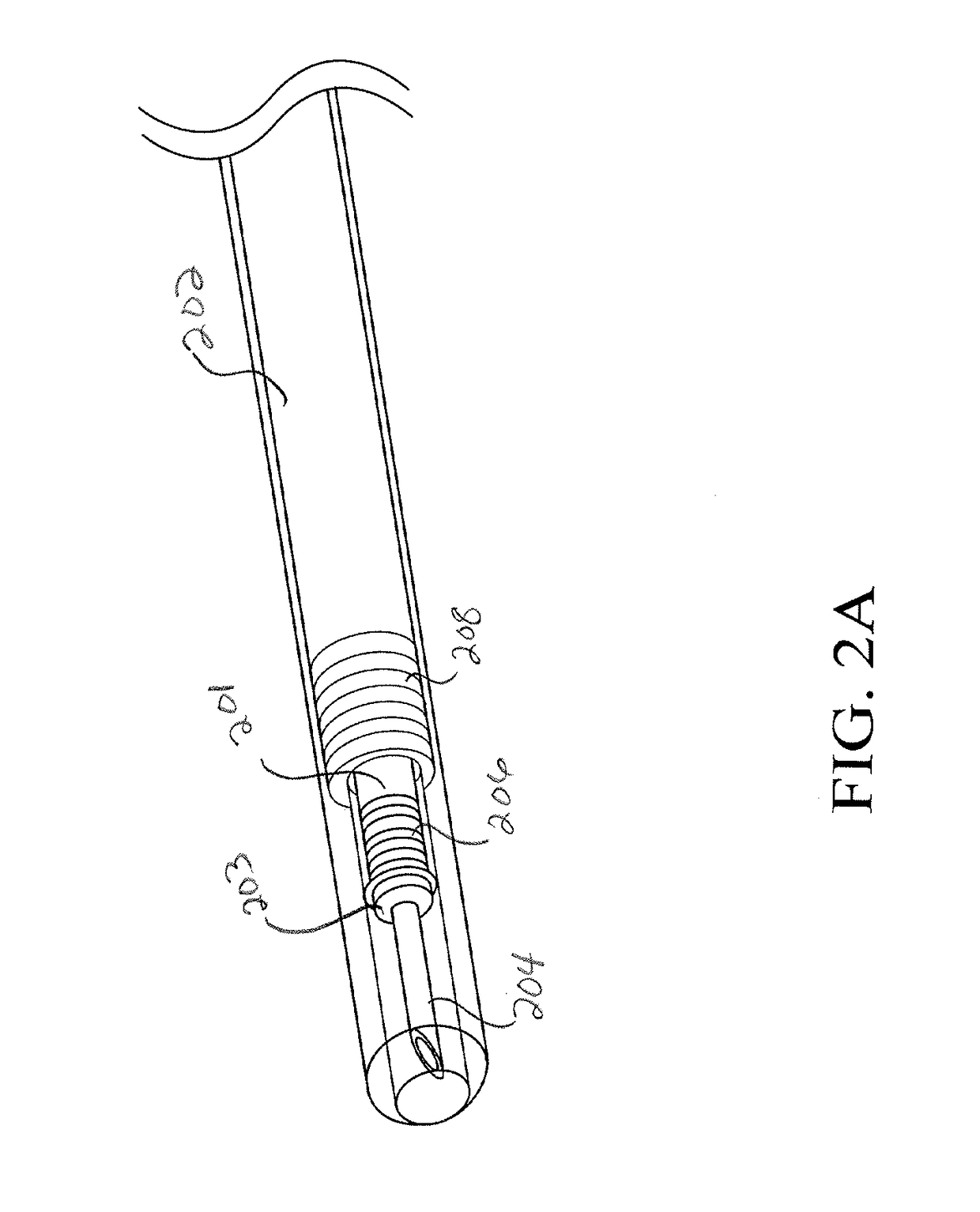Mr compatible puncture catheter
a technology of puncture catheter and mri, which is applied in the direction of catheters, magnetic variable regulation, instruments, etc., can solve the problems of high current density in the tissue, high safety risks for patients, and high current density of the tissue, so as to reduce the number of components, simplify the design, and facilitate the manufacture.
- Summary
- Abstract
- Description
- Claims
- Application Information
AI Technical Summary
Benefits of technology
Problems solved by technology
Method used
Image
Examples
Embodiment Construction
[0044]Referring now to the figures, FIG. 1 shows the distal end 100 of a first aspect of the invention. The injection catheter includes an inner shaft 101 that slides within an outer shaft 102. The inner shaft 101 is a long hollow tube that may consist of a braided catheter construction or a simple polymer extrusion. A puncture tip 103 is operably connected to the distal tip of the inner shaft 101. The puncture tip 103 has a small, short cannula 104 fixedly attached on its distal surface. The cannula extends distally from the puncture tip and is a hollow tube that has a sharpened tip 105. The cannula is similar in shape to the distal tip section of a traditional transseptal needle. The connection between the puncture tip 103 and the inner shaft 101 is such that the lumen of the cannula is continuous with the lumen of the inner shaft. The inner diameter of the cannula lumen is preferably smaller than the inner diameter of the inner shaft lumen, but they could be the same size, or the...
PUM
 Login to View More
Login to View More Abstract
Description
Claims
Application Information
 Login to View More
Login to View More - R&D
- Intellectual Property
- Life Sciences
- Materials
- Tech Scout
- Unparalleled Data Quality
- Higher Quality Content
- 60% Fewer Hallucinations
Browse by: Latest US Patents, China's latest patents, Technical Efficacy Thesaurus, Application Domain, Technology Topic, Popular Technical Reports.
© 2025 PatSnap. All rights reserved.Legal|Privacy policy|Modern Slavery Act Transparency Statement|Sitemap|About US| Contact US: help@patsnap.com



